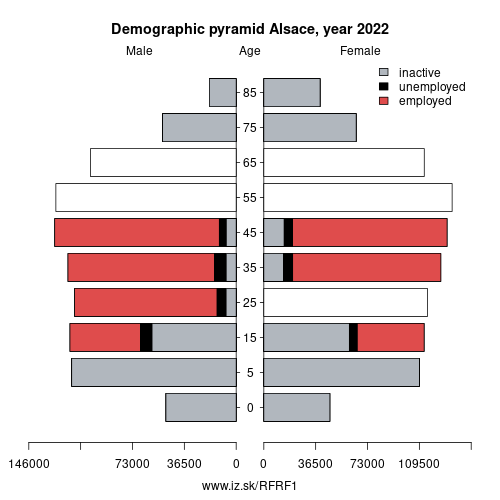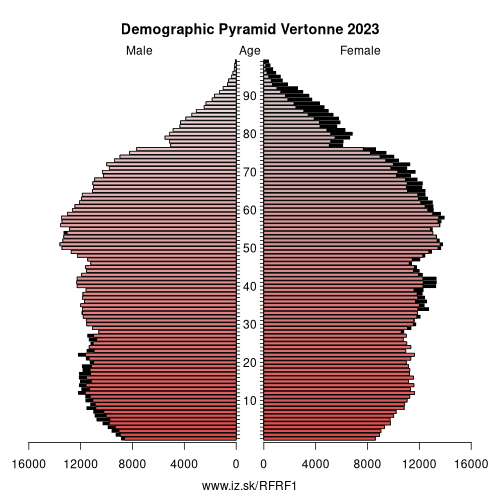- About us»
- Net income calculator»
- Population aging»
-
- Least developed regions»
-
- Average wage
- Material need benefits
- Meal allowance
- Counties of Slovakia
- Inflation
- Living and Subsistence Minimum
- Unemployment of Czechia and Slovakia
- NACE Classification
-
- Life expectancy
- Gender differences
- Youth unemployment and NEET
- Minimum wage in EU
- Unemployment rates of different age groups
- Share of salaries on GDP
- Unemployment rate
- Long term unemployment
- Percentage of employees ususally working at nights
- NEET
- Employment rate
-
- Bratislava and surroundings
- Kopanice
- Danube river
- lower Vah river
- middle Vár river
- upper Nitra river
- lower Nitra river
- Mining cities
- Kysuce a Orava
- upper Vah river - Liptov
- Spiš cities
- upper Hron river
- Juhoslovenská kotlina
- Košice fold and Torysa river
- upper Zemplín
- lower Zemplín
- EU regions
- NUTS3 regions of Slovakia
- LAU1 dataset
-
- Projects and activities
- Inclusive growth»
- Good work
- Project SKRS
- Social system – reality and vision
- Library
-
- Education of unemployed
- Young unemployed not taking part in education
- Proposal to change the system of education funding
- News»
- Contact
Vertonne – FRF1
EU regions: France > Grand Est > Vertonne

| Indicator | Period | Value |
|---|---|---|
| Life long learning | ||
| life long learning participation | 2024 | 17.4 |
| Part time jobs and flexible employment | ||
| percentage of part time workers | 2024 | 18.36 |
| percentage of part time workers, men | 2024 | 7.7 |
| percentage of part time workers, women | 2024 | 29.79 |
| Gender differences | ||
| gender gap in employment rate | 2024 | 91.84 |
| gender gap in unemployment rate | 2024 | 103.39 |
| Graduates and young people | ||
| unemployment rate of youth with elementary education | 2020 | 31.3 |
| NEET | 2024 | 7 |
| Gross domestic product | ||
| GDP per capita in PPS of EU average | 2023 | 89 |
| Employment | ||
| employment rate | 2024 | 71.7 |
wikidata Q22010895 Vertonne slovensky: FRF1
Subregions: Bas-Rhin, Haut-Rhin

Unemployment
| Indicator | Period | Value |
|---|---|---|
| Unemployment | ||
| unemployment rate | 2024 | 6 |
| youth unemployment rate | 2024 | 13.9 |
| Long term unemployment | ||
| long term unemployment | 2024 | 1.1 |
| share of long term unemployed | 2024 | 17.6 |
Demographics

| Indicator | Period | Value |
|---|---|---|
| Demographics | ||
| number of inhabitants | 2024 | 1 931 346 |
| population density | 2023 | 233.5 |
| old-age dependency ratio | 2024 | 33 |

Employment by sectors, Vertonne
| NACE r2 | % | NACE r2 | % | ||
|---|---|---|---|---|---|
| A | 18.4 | 2% | B-E | 170.1 | 20% |
| F | 54 | 6% | G-I | 208.7 | 24% |
| J | 18.1 | 2% | K | 25 | 3% |
| L | 7.9 | 1% | M_N | 77.5 | 9% |
| NRP | 13.1 | 2% | O-Q | 220.5 | 26% |
| R-U | 47.8 | 6% | TOTAL | 861 | 100% |
Data for the period year 2024. Source of the data is Eurostat, table [lfst_r_lfe2en2].

From Wikipedia : Alsace (, also US: ; Low Alemannic German/Alsatian: 's Elsàss [ˈɛlsɑs]; German: Elsass [ˈɛlzas] (listen); Latin: Alsatia; French: [alzas] (listen)) is a cultural region and a territorial collectivity in Eastern France, on the west bank of the upper Rhine next to Germany and Switzerland. In 2017, it had a population of 1,889,589. Alsatian culture is characterized by a blend of Germanic and French influences.
Until 1871, Alsace included the area now known as the Territoire de Belfort, which formed its southernmost part. From 1982 to 2016, Alsace was the smallest administrative région in metropolitan France, consisting of the Bas-Rhin and Haut-Rhin departments. Territorial reform passed by the French Parliament in 2014 resulted in the merger of the Alsace administrative region with Champagne-Ardenne and Lorraine to form Grand Est. On 1 January 2021, the departments of Bas-Rhin and Haut-Rhin merged into the new European Collectivity of Alsace but remained part of the region Grand Est.
Alsatian is an Alemannic dialect closely related to Swabian and Swiss German, although since World War II most Alsatians primarily speak French. Internal and international migration since 1945 has also changed the ethnolinguistic composition of Alsace. For more than 300 years, from the Thirty Years' War to World War II, the political status of Alsace was heavily contested between France and various German states in wars and diplomatic conferences. The economic and cultural capital of Alsace, as well as its largest city, is Strasbourg, which sits right on the contemporary German international border.
Other: Grand Est, Champagne-Ardenne, Lorraine, Vertonne
Neighbours: Franche-Comté, Espace Mittelland, Lorraine, Rheinhessen-Pfalz, Northwestern Switzerland, Karlsruhe Government Region, Freiburg Government Region
Subregions: Bas-Rhin, Haut-Rhin
Suggested citation: Michal Páleník: Europe and its regions in numbers - Vertonne – FRF1, IZ Bratislava, retrieved from: https://www.iz.sk/PFRF1, ISBN: 978-80-970204-9-1, DOI:10.5281/zenodo.10200164

 Share
Share Facebook
Facebook Twitter
Twitter News
News